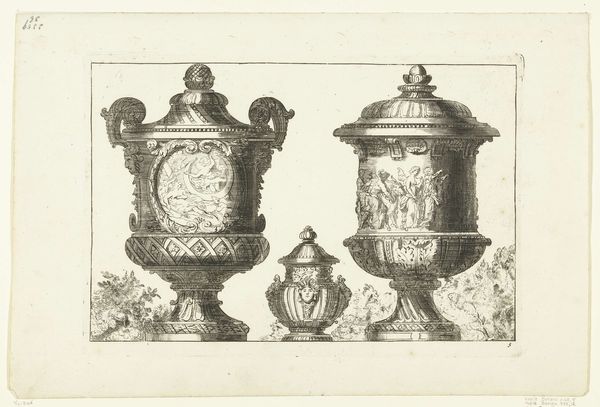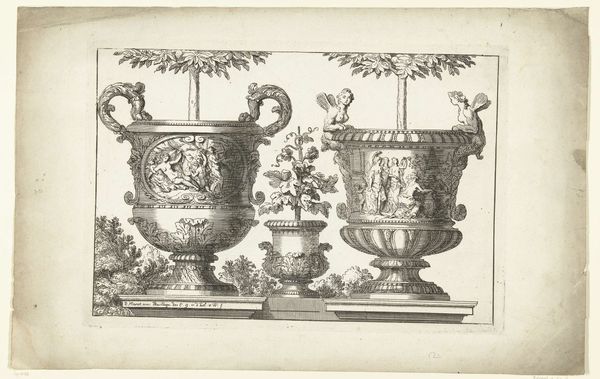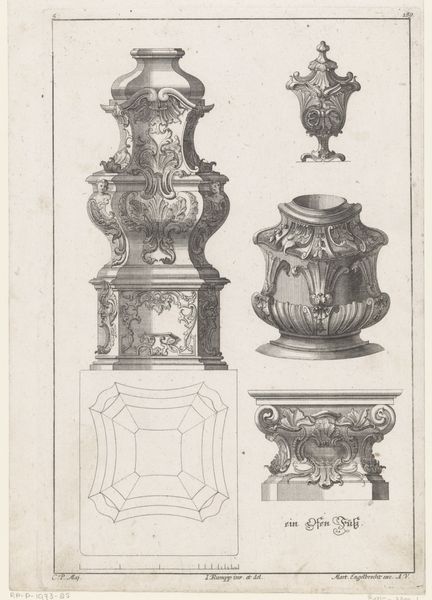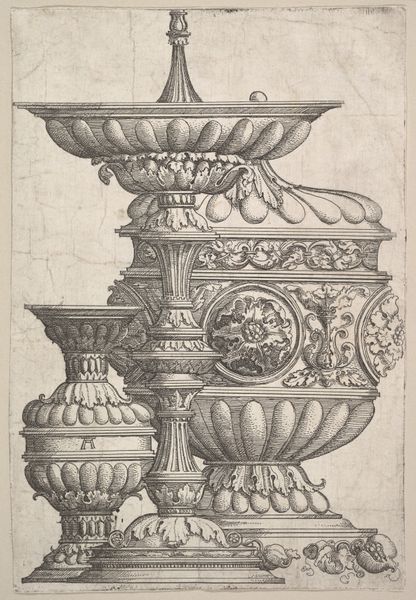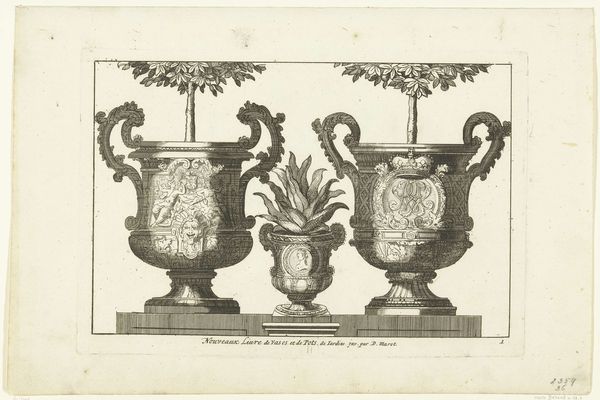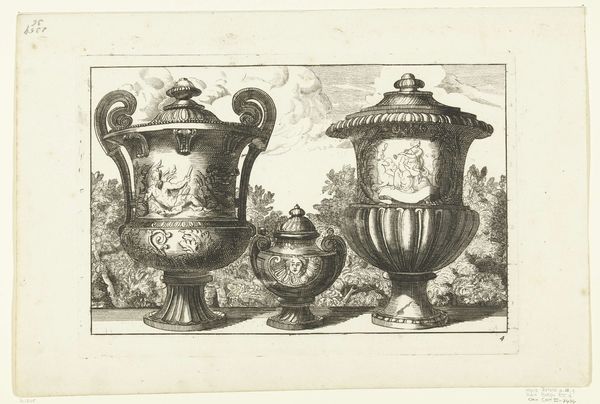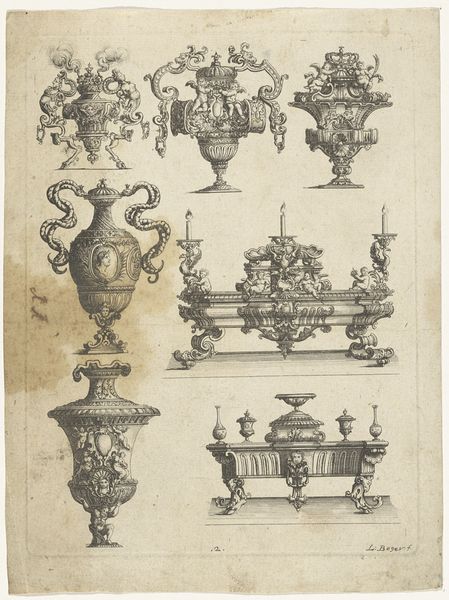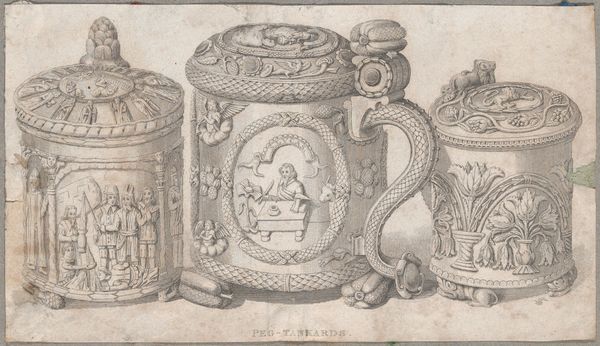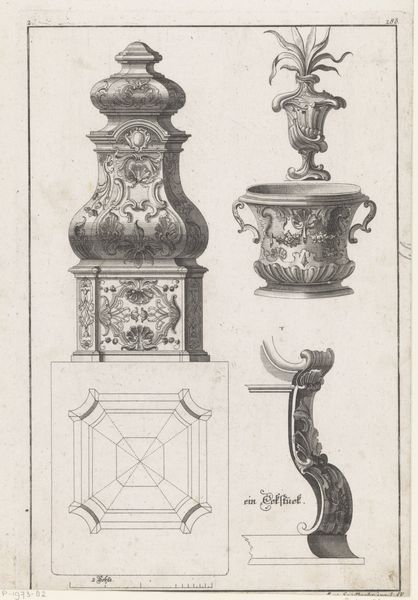
drawing, print
#
drawing
#
light pencil work
# print
#
pen sketch
#
pencil sketch
#
old engraving style
#
sketch book
#
personal sketchbook
#
pen-ink sketch
#
pen work
#
sketchbook drawing
#
sketchbook art
Dimensions: Sheet (Trimmed): 6 in. × 8 7/8 in. (15.2 × 22.6 cm)
Copyright: Public Domain
Curator: Before us we have "Three Goblets," a print created by Hieronymus Hopfer sometime between 1528 and 1563. The Met currently holds it. Editor: Wow, those are…intense. All that ornamentation. It's like the artist couldn’t decide which classical motif to leave out, so just crammed them all in. I get a headache just looking at it! Curator: This reflects a key aspect of the period. Ornament was a signifier of status, reflecting access to skilled craftsmanship and precious materials. Think of these designs circulated among metalworkers. Editor: A bit much to drink from, surely. Are they even practical, or are we purely in the realm of display? Curator: Utilitarian concerns definitely took a backseat. This print provided patterns for elaborate metalwork intended for princely courts or wealthy merchants, places of prestige. Each goblet is teeming with symbolism: winged figures, floral flourishes. Editor: The level of detail is impressive, the pen work is really something. I imagine it took hours. Look at those tiny faces! I keep imagining them on some Renaissance dining table, glittering in candlelight. Curator: Precisely. This aesthetic was deeply intertwined with conspicuous consumption and the display of power during the Renaissance. Engravings such as these played a vital role in shaping those displays. It speaks volumes of how taste was carefully constructed, especially regarding wealth. Editor: You know, the funny thing is, for all their ostentatiousness, they almost feel… playful. Maybe it's those little cherubs and the winged mermaids. They give the whole thing a whimsical edge. What were we calling this—"camp" before? Curator: Perhaps there is a touch of camp, a prefiguring of an almost modern sensibility despite the historical gap. Editor: Ultimately, I see them now as being incredibly optimistic about the abundance and exuberance of life, a perspective on culture far more important than pure commerce and power.
Comments
No comments
Be the first to comment and join the conversation on the ultimate creative platform.
